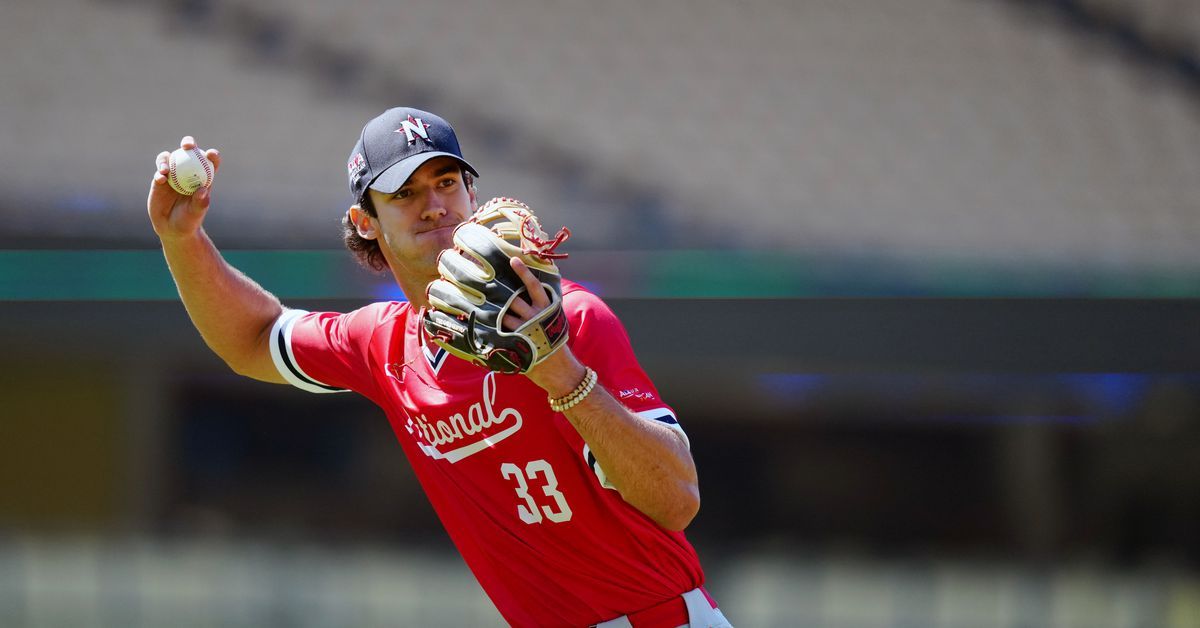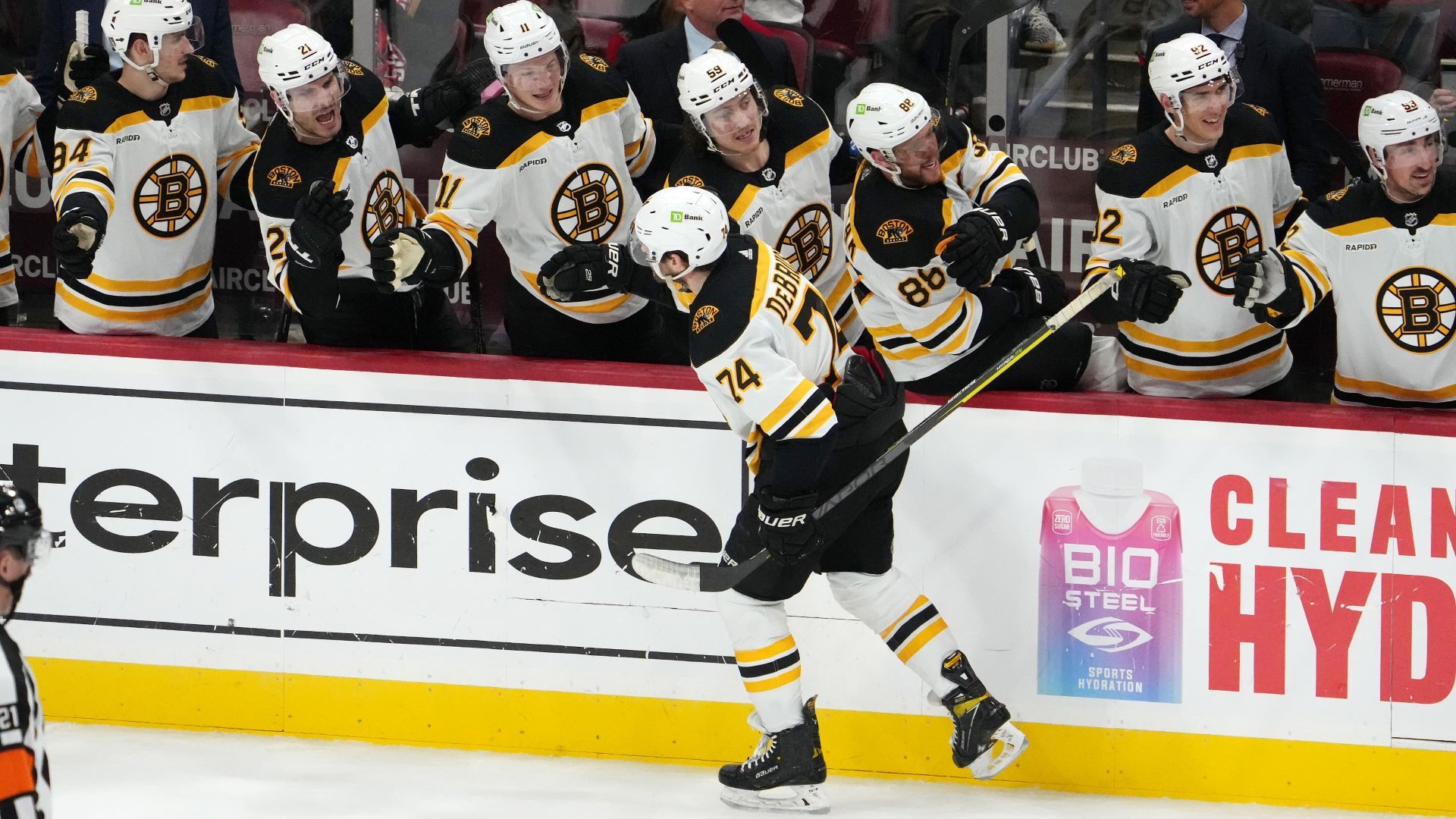Giants draft takeaways
The 2023 MLB Draft is officially in the books, which means that 21 different amateur baseball players received a call from the San Francisco Giants between Sunday and Tuesday, letting them know what the next step in their dream is, should they choose to sign.
It was the fifth draft since Farhan Zaidi took over the Giants, and you could make the case that it was the first time he entered a draft with the benefit of the doubt. Giants fans remain oddly skeptical of their president of baseball operations, but given that the team is in line for their best rookie showing in well over a decade, the braintrust has shaken a lot of the “can’t draft or develop” labels that were attached to them for the last few years. Patrick Bailey needing only a few months to go from “Exhibit A as to why Zaidi is an awful first-round drafter” to “is this the best catcher in baseball?” will do that.
Anyway, you can read our articles on the Giants first-round pick, second-round pick, compensatory round pick, second-day picks, and third-day picks, if you want to get caught up. And then we’ll dive into some takeaways from an exciting draft.
The final count
Here’s the full list of players that the Giants selected over the three-day event.
R1, P16: Bryce Eldridge — RHP/OF/1B — James Madison High School (Virginia)
R2, P52: Walker Martin — SS — Eaton High School (Colorado)
R2C, P69: Joe Whitman — LHP — Kent State
R3, P85: Cole Foster — SS — Auburn
R4, P117: Maui Ahuna — SS — Tennessee
R5, P153: Quinn McDaniel — 2B — Maine
R6, P180: Luke Shliger — C — Maryland
R7, P210: Scott Bandura — OF — Princeton
R8, P240: John Bostick — RHP — Grayson College
R9, P270: Charlie Szykowny — 3B — University of Illinois at Chicago
R10, P300: Ryan Vanderhei — RHP — TCU
R11, P330: Jack Payton — C — Louisville
R12, P360: Timmy Manning — LHP — Arizona State
R13, P390: Jose Ortiz — OF — Leadership Christian Academy (Puerto Rico)
R14, P420: Cale Lansville — RHP — San Jacinto College North
R15, P450: Dylan Carmouche — LHP — Tulane
R16, P480: Justin Wishkoski — 3B — Sam Houston
R17, P510: Drew Cavanaugh — C — Florida Southern
R18, P540: Michael Rodriguez — LHP — North Greenville University
R19, P570: Tommy Kane — LHP — Maryland
R20, P600: Nadir Lewis — OF — Princeton
So, what can we learn from what just went down? Let’s dive a little deeper.
Continuing the trend of extending the first round
The Giants second-round pick, prep shortstop Walker Martin — who led the nation in home runs last year (yes, he played in Colorado, but he’s also a shortstop) — was notable for a few reasons. But perhaps most notable is the fact that the Giants were linked to Martin quite a bit in the lead-up to the draft ... but with their first-round pick.
Had the Giants used the No. 16 pick on Martin, they would have been quite happy. I would have been quite happy. Many of you would have been quite happy.
Instead, they were able to get him at No. 52, while using No. 16 on a player who almost surely would have been off the board by the middle of the second round. And then to top it off, they added a compensatory round pick in Joe Whitman who was seen as a fringe first-round talent on most big boards.
This is becoming a trend for the Giants. Last year’s second-round pick, Carson Whisenhunt, was also widely viewed as a first-round talent. In 2020, the Giants nabbed Kyle Harrison in the third round, and while Harrison wasn’t necessarily seen as a surefire first-round talent, he was viewed as a player deserving of first-round slot money. Even in 2021 the Giants got Matt Mikulski, seen by many as a late first-round pick, at No. 50 .... that may not look good right now, but that’s just how drafting goes.
It’s become a huge part of the Giants draft philosophy, it seems: find a way to fit the puzzle pieces such that they can get more than one first-round talent. That seems like a pretty solid strategy from where I’m sitting.
Discontinuing the trend of pitchers, pitchers, pitchers
The Giants went heavy on pitchers in the 2021 and 2022 drafts, which led to some curiosity as to what their approach would be this year. Had they gone pitcher-heavy because they valued drafting pitchers more than position players? Or had they just needed to even out the farm with more arms, and would now have to even it out in the other direction?
The latter, it seems. The Giants ended up filling out the back of the draft with some arms, finishing with eight full-time pitchers and a two-way player out of their 21-name draft. But the first seven rounds saw them draft six position players, one hit-centric two-way player, and just one full-time pitcher. That’s quite a difference from 2021, when they used their first nine picks on pitchers, and 2022, when they used nine of their first 12 picks on full-time pitchers, and a 10th on an arm-centric two-way player.
San Francisco entered the season with an arm-heavy farm, and it’s only grown more unbalanced as Bailey, Luis Matos, and Casey Schmitt have become MLB regulars. Now they’re evening things out again.
Getting younger
Another trend with the Giants this year has been that their top talent is in the upper Minors. Counting players who began the season with prospect status, I’d say most people have a clear top six list of Giants prospects, in some order or another: Bailey, Matos, and Schmitt, who are all in the Majors; Harrison, who is in AAA and looks primed for an MLB debut this year; and Whisenhunt and Marco Luciano, who are excelling in AA and look likely to end the year in AAA. If you want, you can expand the list to include Vaun Brown and Mason Black, who fit into the Whisenhunt/Luciano bucket.
In the last few years we’ve grown accustomed to Low-A and High-A being where the excitement on the farm is coming from, but now it’s in the upper Minors and even the Majors.
It goes without saying that a draft helps balance that out, but the Giants balanced it out a little bit extra. They used their first two picks on teenagers, and grabbed fewer four-year college players than they had in recent seasons. By the Giants standards, this was a fairly young draft class.
Prioritizing versatility
The Giants have made versatility a clear priority ever since Zaidi took over, often to the chagrin of the fanbase.
A prime example of why the Giants do that — and why it annoys fans — is on clear display with Schmitt.
After developing him as a world-class defensive third baseman, the Giants started using Schmitt regularly at both middle infield positions this season, and his MLB debut came as a shortstop. The reigning Minor League Gold Glove winner has played 380 career innings in the Majors ... with only 115 coming at the hot corner.
The pessimism from the fanbase is that the Giants are taking the thing that Schmitt does best and not using it full-time. The reason from the front office is that the Giants want to maximize the pathways for Schmitt to provide value. That way, if something crazy happens — like, just to pull up a random hypothetical off the top of my head, J.D. Davis emerges as a Gold Glove candidate at third base, forcing Schmitt to shortstop, only for Brandon Crawford to have something of a resurgence and Thairo Estrada to break his hand, forcing Schmitt to second base — he still provides value.
We saw that at play in their draft class. Four of the Giants first six picks were middle infielders (three shortstops and a second baseman), and if there’s one thing the Giants have taught us, it’s that a quality shortstop can almost always play a whole bunch of other positions. Not only have we seen Schmitt all over the infield this year, but we’ve seen Tyler Fitzgerald and Will Wilson in Sacramento playing all over the infield and the outfield. The Giants had Brett Wisely, a middle infielder, make his MLB debut in center field earlier this year.
You can see it elsewhere, too. The Giants drafted a two-way player in the first round for the second consecutive season, and they used three picks on catchers, with two of them being players with extensive experience in the outfield. The Giants have been at the forefront of positional versatility, and while it’s sometimes frustrating for fans, it’s easy to see why it’s so appealing to the team. They drafted 21 players, but a whole lot more than 21 pathways to the Majors.
Signability
The Giants look to have a pretty signable class. They’ve expressed confidence in signing just about everyone, though history tells us that probably won’t end up being the case.
Over the last two drafts, the Giants had six players not sign: all were late in the draft, and half were prep players. This year their last seven picks were collegiate players, and they only had one high schooler after the second round. I think there’s a pretty good chance that they end up with 19 or 20 signed players from this draft.
Good reviews
Bailey will be starting his $300 million extension by the time we can accurately judge the Giants 2023 draft class, but it never hurts to get good reviews in the interim.
ESPN’s Kiley McDaniel (formerly an MLB front office and Fangraphs employee) listed the Giants as one of two teams to nail the draft, saying that, “I also loved the top of the Giants draft this year, landing two easy first-round talents, Bryce Eldridge and Walker Martin, in the top two rounds, followed by a fringe first round talent in lefty Joe Whitman at 69th overall. Like the Marlins draft, I see a couple of more big leaguers among the next wave of picks: middle infielders Cole Foster, Maui Ahuna, and Quinn McDaniel, along with catcher Luke Shliger.”
Other reviews were similar. The Giants did smart things, which may not work out.
But they might.
Another draft in the books, folks. This was a fun one.
Source: McCovey Chronicles


